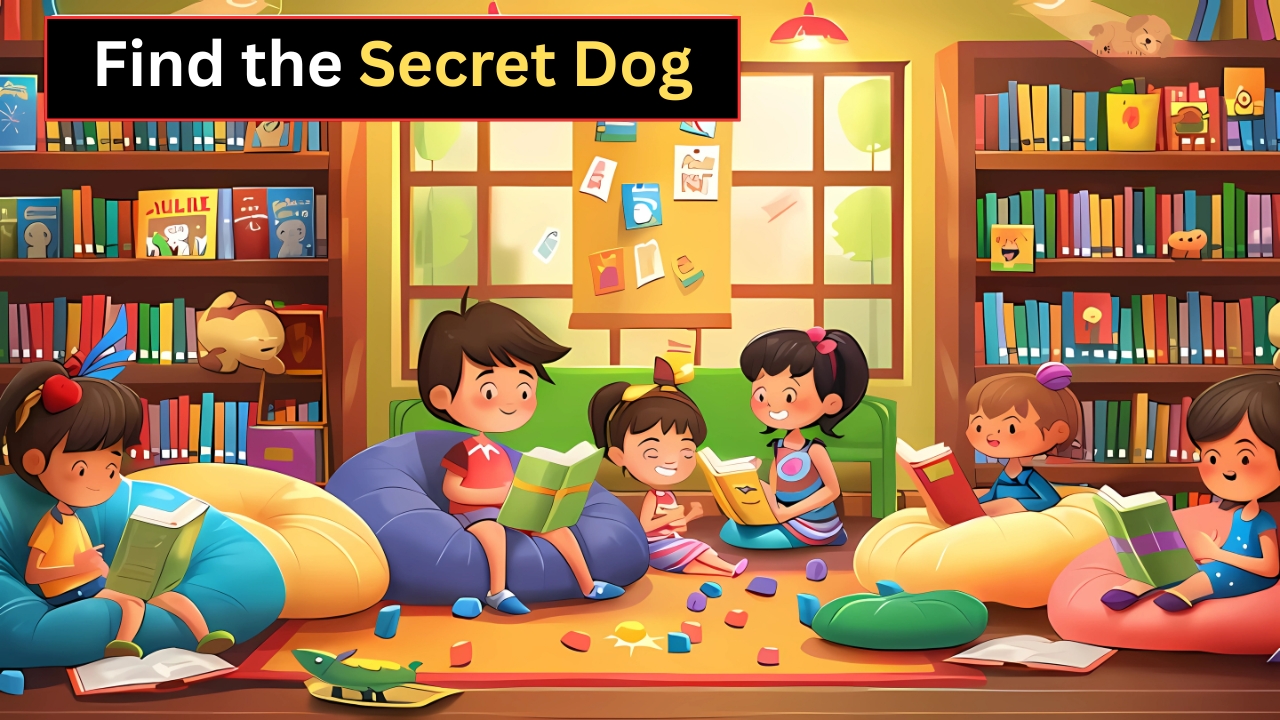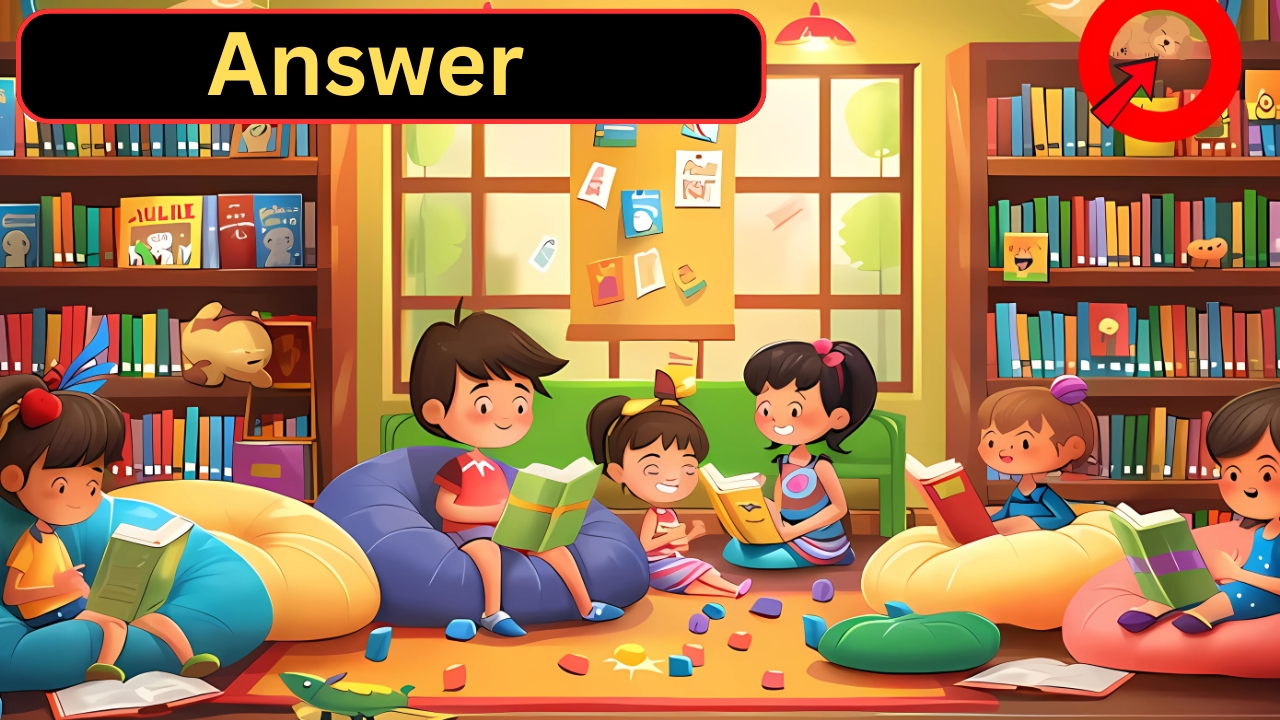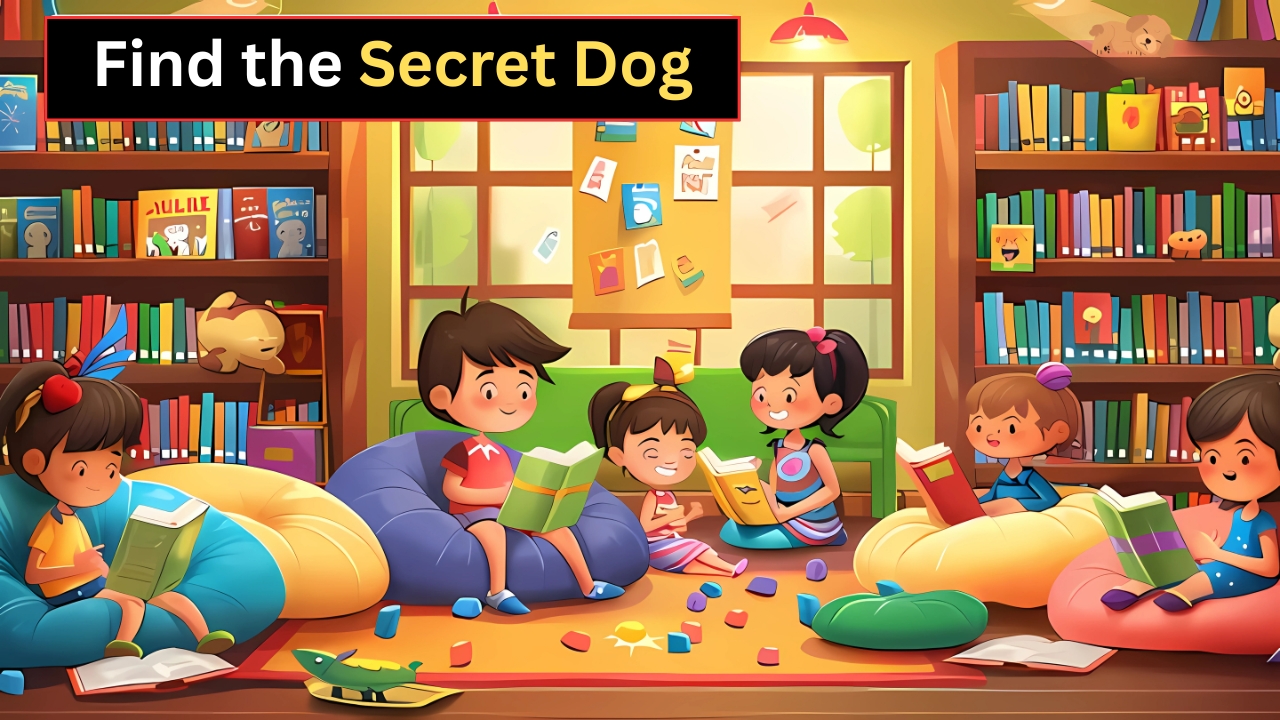Find the Hidden Dog : Optical illusions have long captivated the human mind, blending art, psychology, and science into a single, mesmerizing experience. These visual puzzles challenge our perception, forcing us to question what we see and how our brains interpret the world. Among the myriad of optical illusions circulating online, one particular challenge has taken the internet by storm: finding a hidden dog in a complex image within just seven seconds.
This task is not only a test of visual acuity but also a measure of cognitive sharpness and quick thinking. In this article, we dive deep into the allure of optical illusions, explore the hidden dog challenge, and offer tips to master this brain-teasing puzzle.
The Fascination with Optical Illusions
Optical illusions are more than just entertaining images; they are windows into the workings of the human brain. Our visual system is designed to make sense of the world by processing patterns, shapes, and colors. However, illusions exploit the brain’s shortcuts, creating discrepancies between reality and perception. These visual tricks often reveal how our minds fill in gaps, make assumptions, or misinterpret spatial relationships.

The appeal of optical illusions lies in their ability to engage people of all ages and backgrounds. Whether it’s a classic like the Rubin vase, which toggles between a goblet and two faces, or modern viral challenges like the hidden dog puzzle, these illusions spark curiosity and competition.
They encourage us to test our observational skills and share our triumphs (or frustrations) with others. Social media platforms, including X, have amplified this phenomenon, with users posting their attempts to solve illusions and challenging friends to beat their times.
The Hidden Dog Challenge: What’s It All About?
The hidden dog optical illusion is a deceptively simple yet fiendishly difficult puzzle. The image, often a chaotic mix of shapes, colors, and patterns, conceals the silhouette or detailed form of a dog. The challenge is to locate this elusive canine within a strict time limit of seven seconds. While the premise sounds straightforward, the complexity of the image makes it a true test of mental agility.
Unlike straightforward “spot the difference” games, this illusion requires you to look beyond the obvious. The dog might be camouflaged within a forest scene, blended into an abstract design, or cleverly integrated into a crowd of other animals. The seven-second deadline adds pressure, forcing you to rely on instinct and rapid visual processing rather than methodical analysis.
This particular challenge has gained popularity due to its balance of difficulty and fun. It’s accessible enough for beginners to attempt but tough enough to stump even the sharpest minds. Posts on X highlight its viral spread, with users sharing screenshots of the image alongside their reaction times and tips for spotting the dog.
Why Is It So Hard to Find the Dog?
The difficulty of the hidden dog illusion stems from several factors rooted in visual perception and cognitive psychology. First, the image is designed to overwhelm the brain with visual noise. Excessive details, competing colors, and overlapping shapes create a sensory overload, making it hard to focus on any single element. The dog, meanwhile, is often disguised through clever use of negative space, color blending, or misdirection.
Second, our brains are wired to recognize familiar patterns, such as faces or common objects, but the dog in this illusion may not conform to our expectations. It could be an abstract outline, a partial figure, or oriented in an unusual way (e.g., upside down or sideways). This forces us to override our automatic assumptions and adopt a more flexible mindset.
Finally, the time constraint amplifies the challenge. Seven seconds is barely enough time to scan the entire image, let alone process its nuances. Under pressure, our brains may fixate on irrelevant details or miss the subtle cues that reveal the dog’s location.
Tips to Spot the Hidden Dog
While the hidden dog challenge may seem daunting, a few strategies can improve your chances of success. Here are some practical tips to help you conquer the puzzle in seven seconds or less:
- Relax Your Focus: Instead of staring intently at one part of the image, try to soften your gaze. This allows your peripheral vision to pick up on broader patterns, which can reveal the dog’s shape more easily.
- Look for Negative Space: The dog might be formed by the spaces between other objects rather than a solid figure. Pay attention to gaps, outlines, or silhouettes that resemble a canine shape.
- Scan Systematically: Divide the image into sections and quickly scan each one. Start from the edges and work inward, or focus on areas with less clutter where the dog might be hiding.
- Think Outside the Box: The dog may not look like a typical dog. It could be an abstract representation, a partial figure, or oriented in an unexpected way. Keep an open mind about what “dog” might mean in the context of the illusion.
- Practice Makes Perfect: Optical illusions improve with practice. The more you train your brain to spot hidden objects, the better you’ll become at recognizing subtle cues.
- Use the Full Seven Seconds: Don’t panic if you don’t see the dog immediately. Take a deep breath and use the entire time to explore the image. Sometimes, the solution clicks just as the clock runs out.
The Science Behind the Challenge
The hidden dog illusion is a fascinating case study in cognitive science. It engages multiple brain processes, including visual perception, attention, and pattern recognition. The primary visual cortex processes the raw data from the image, while higher-level areas like the parietal and frontal lobes interpret shapes and make decisions about what’s relevant.
The time limit taps into the brain’s executive functions, which govern quick decision-making under pressure. Meanwhile, the illusion’s complexity exploits the brain’s tendency to prioritize certain visual cues over others, a phenomenon known as selective attention. For example, you might focus on bright colors or prominent shapes while overlooking the subtler outline of the dog.
Optical illusions also highlight individual differences in perception. Some people are naturally better at spotting hidden objects due to stronger visual-spatial skills or more flexible cognitive processing. Others may struggle because their brains are more rigid in how they interpret ambiguous images. Regardless of your skill level, engaging with illusions like this one can sharpen your mental acuity over time.
Why Take On Optical Illusion Challenges?
Beyond the thrill of solving a puzzle, optical illusion challenges offer several cognitive benefits. They improve focus, enhance visual processing, and boost problem-solving skills. Regularly engaging with brain teasers can also delay cognitive decline and keep your mind sharp as you age.
Moreover, these challenges are a fun way to connect with others. Whether you’re competing with friends, sharing tips on X, or discussing strategies online, optical illusions foster a sense of shared discovery. They remind us that perception is subjective and that everyone sees the world a little differently.
How to Get Started
Ready to take on the hidden dog challenge? You can find versions of this illusion on various websites and social media, including X, where users frequently post the image alongside their completion times. To maximize your success, practice with similar puzzles to familiarize yourself with common illusion techniques. Websites dedicated to brain teasers and optical illusions offer a treasure trove of challenges to hone your skills.
If you’re new to optical illusions, start with simpler puzzles and work your way up to the hidden dog challenge. Set a timer to ensure you’re sticking to the seven-second rule, and don’t be discouraged if you don’t spot the dog on your first try. With patience and practice, you’ll train your brain to see through the visual trickery.
Optical Illusion Answer

The hidden dog optical illusion is more than just a viral internet challenge—it’s a captivating blend of art, science, and fun. By testing your observational skills and mental agility, it offers a unique way to engage your brain and explore the quirks of human perception. Whether you solve it in seven seconds or take a bit longer, the journey of uncovering the hidden dog is a rewarding one. So grab your metaphorical magnifying glass, set your timer, and dive into this delightful puzzle. Can you spot the dog?

